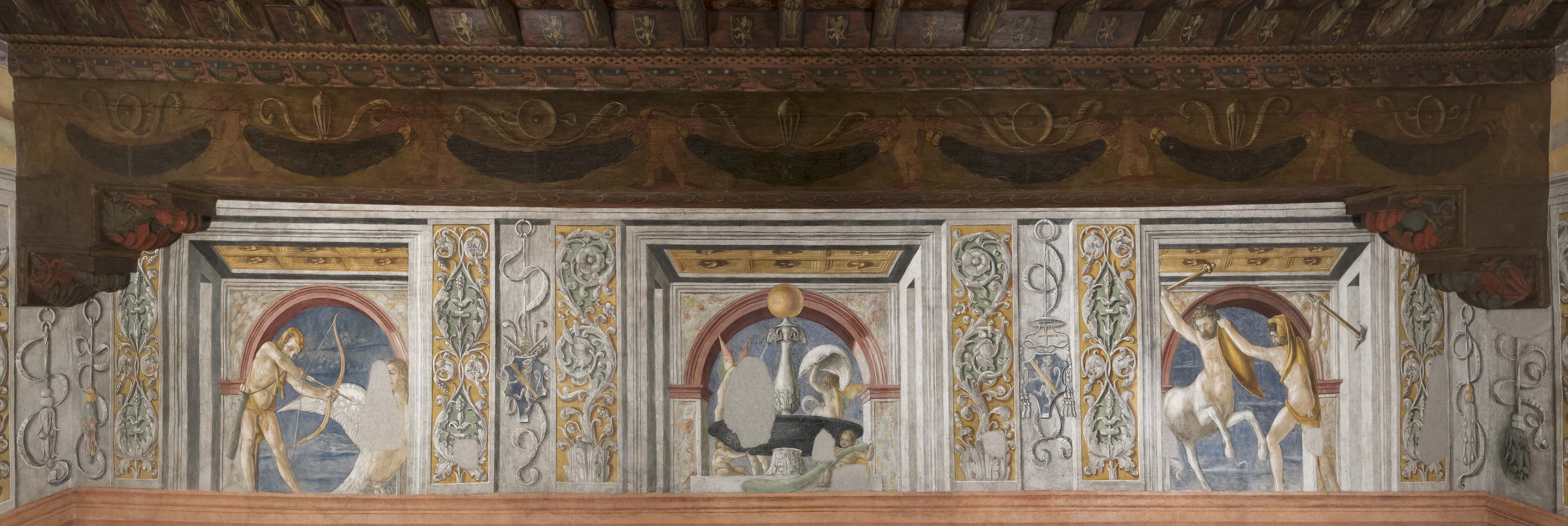The most important paintings from the 15th-century building and an essential piece that helps us reconstruct the entire history of the Roman Renaissance.
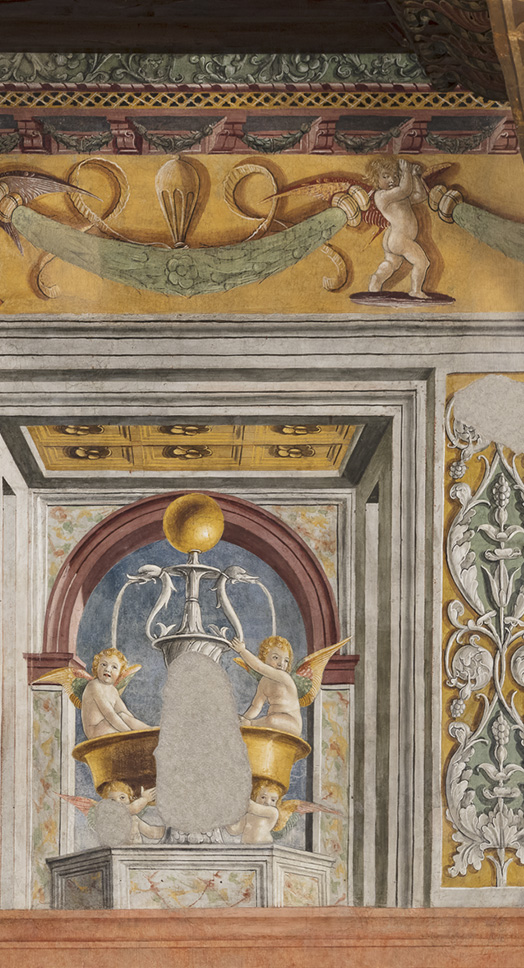
The fresco frieze runs at the top of the four walls of the seventh room of the Barbo Apartment, that is the private apartment of Pietro Barbo, who became Pope Paul II (1464-1471): we are talking about the room where the sacred vestments were kept.
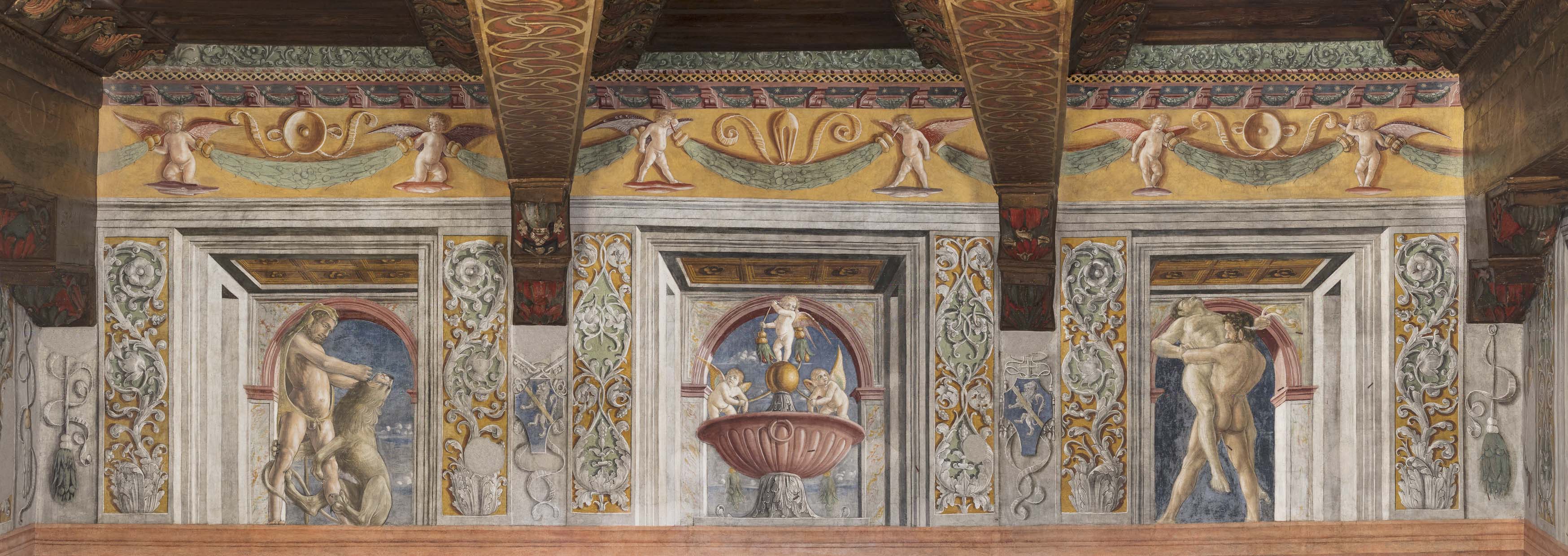
The frieze depicts four fountains with playing cherubs and eight of the twelve Labours of Hercules. Starting from the back wall: Hercules and the Nemean lion, Hercules and Antaeus, Hercules and the Cattle of Geryon, Hercules and Geryon, Hercules and the Dragon Ladon, Hercules and the Ceryneian Hind, Hercules and the Stymphalian Birds, Hercules and Nessus.
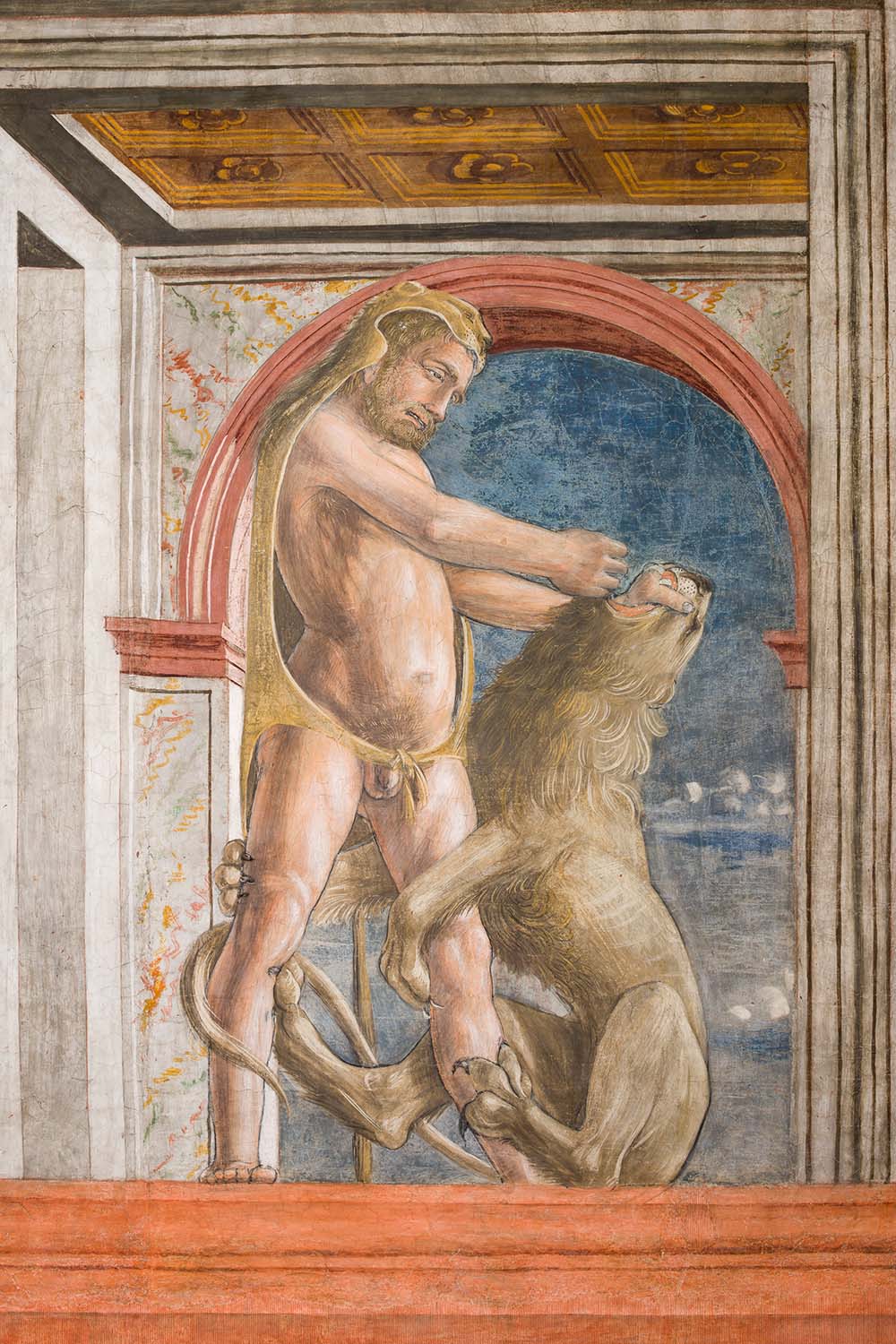
The frescoes were certainly painted after 1467, since in that year the ceiling of the room was raised to match that of the adjacent Sala del Mappamondo. The artist is unknown. Some identify him with the Florentine painter and miniaturist Giuliano Amadei (1446-1496), documented in the service of Paul II. However, most scholars recognise being indebted to Andrea Mantegna (1431-1506): the name of Girolamo da Cremona (information from 1460 to 1483), a painter and illuminator active mainly in northern Italy, has been put forward on this basis. Finally, it has recently been suggested that The Labours of Hercules should be attributed to one of the Venetian artists linked to Rome in the humanistic circle of Giulio Pomponio Leto (1428-1498). 98).
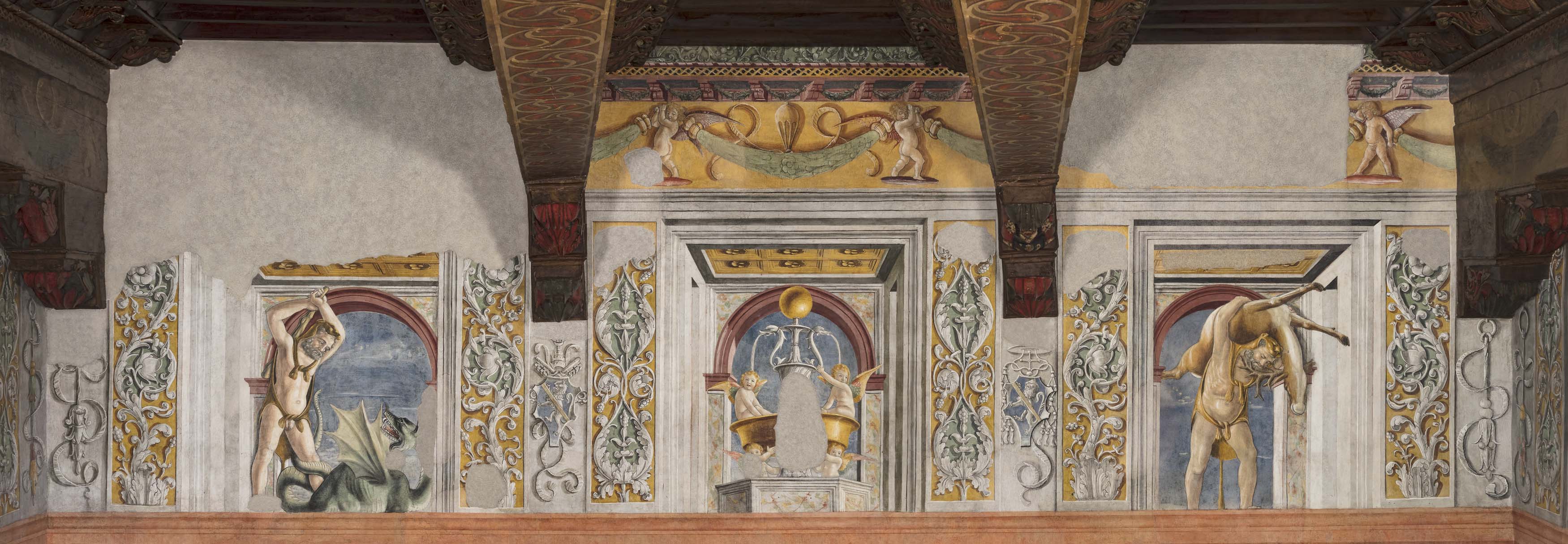
The presence of a subject inspired by classical mythology in one of the private rooms of the pope shouldn’t be too shocking, as Hercules was imbued with Christological interpretations since the beginning of Christianity. More specifically, his Labours were seen as a triumph of virtue over vice and his death was a prefiguration of that of Christ.
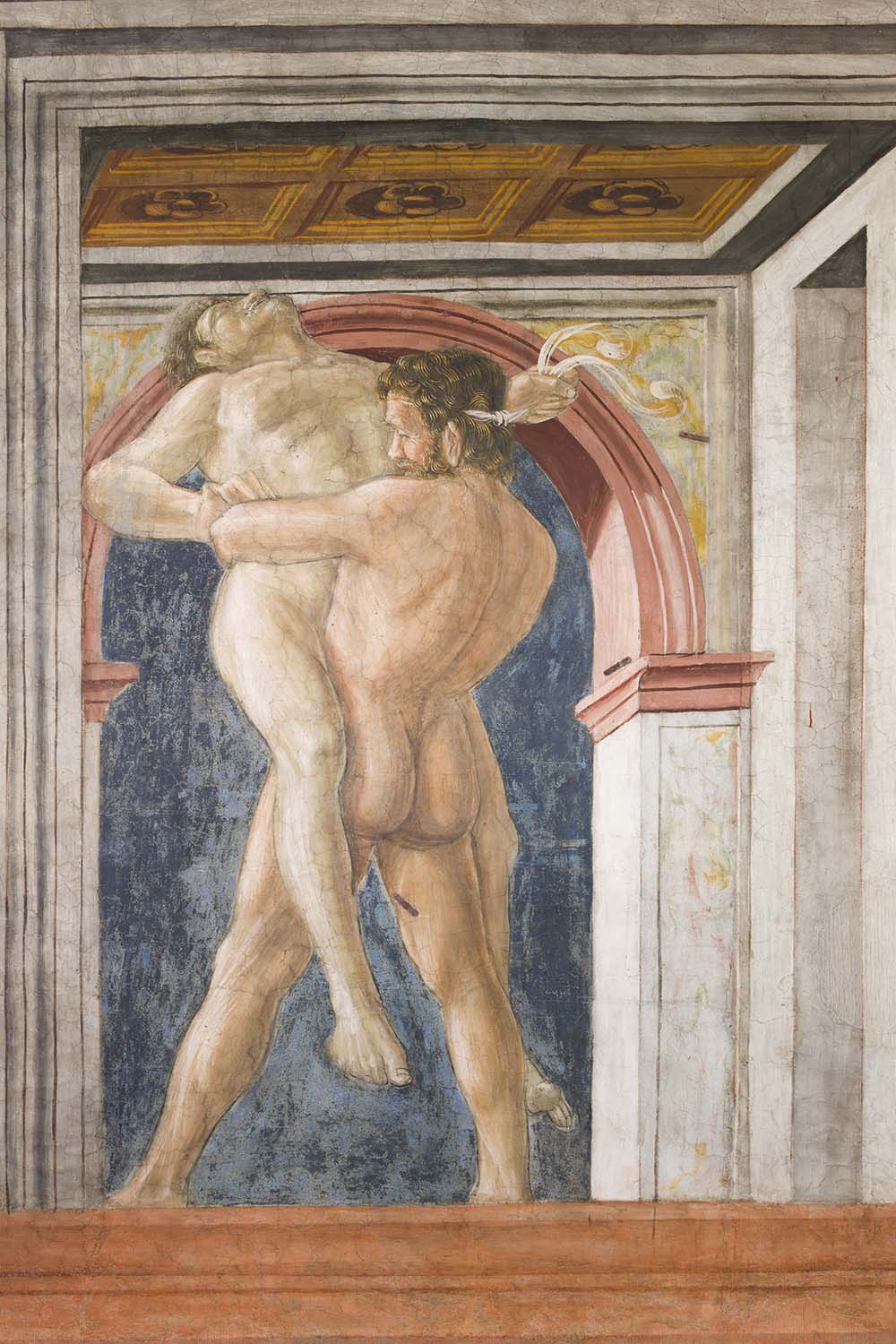
The frieze was restored in 2016 thanks to a charitable donation and it has been given new lighting that allows it to be fully appreciated.
